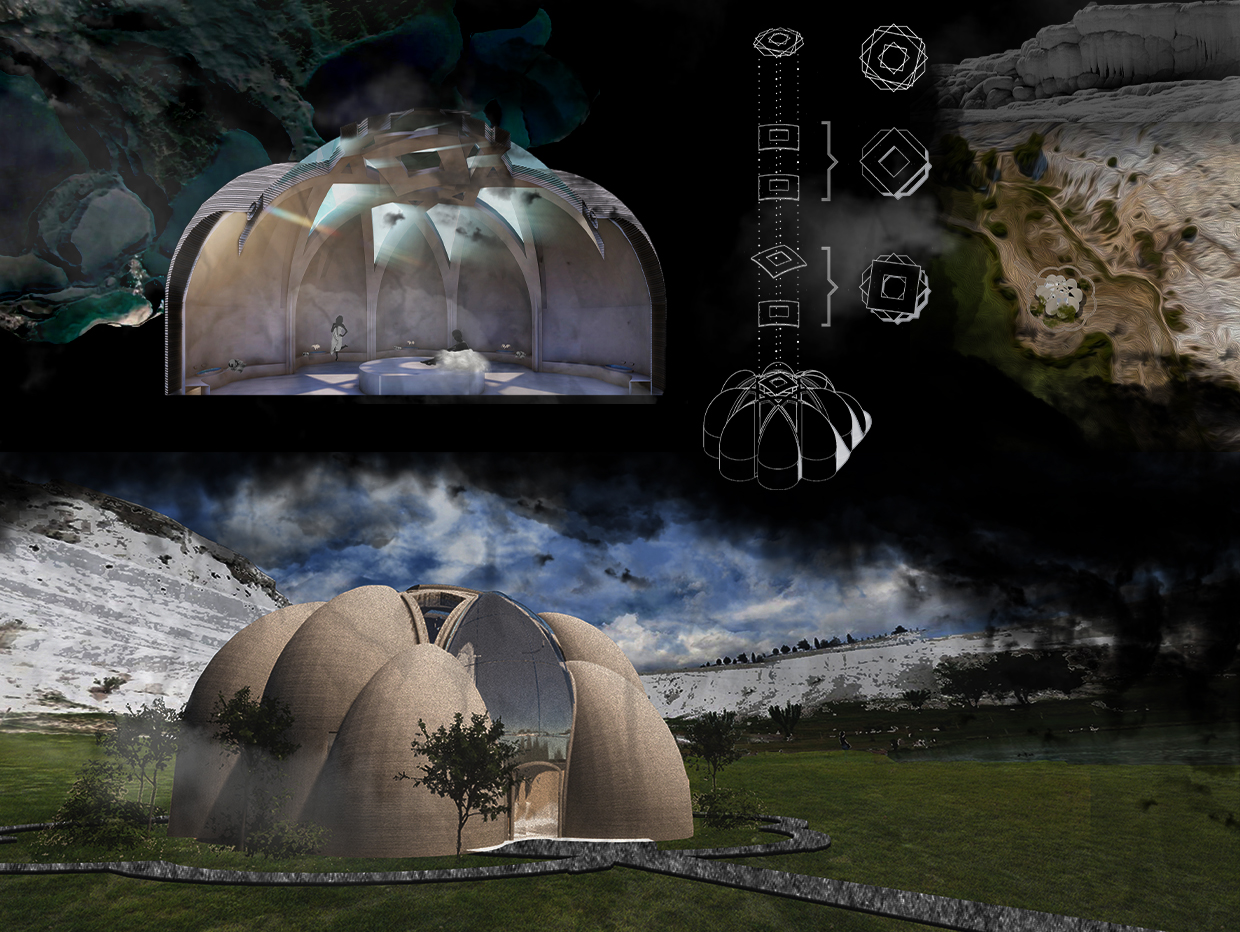Kutn

Category
Daylight in buildings - Region 2: Central and Eastern Europe and the Middle East.
Students
Sare Nur Avcı
Vedia Durmaz
School
Kadir Has Üniversitesi
Country
Turkey
Download
Download ↓
The daylight has been the primary source we humans appeal to for giving life to cities, buildings, and communities. We not only need it for heating or lighting, but it also has always had an intangible, spiritual quality that enhances and inspires us, and influences our mental state and mood. In Anatolia (Asia Minor), the associations of daylight and the Sun have been diverse, but all strongly relate to health, purification, ascension, and contentment, which were also reflected in the design of and life in the built environment. From the Ancient Greek and Roman periods to the Ottoman and Turkish civilizations, the bathhouse is one of the building typologies that is rooted in this rich past of Anatolia. It has evolved through the centuries and was adopted by different peoples without losing its central role in community life and culture. Hammam -as it is called in Turkish- signifies this important role of hygiene and health in Anatolian cultures by also addressing the socialization practices of towns and cities. In its design, hammam would have various sections in public/private transition, and they would be in different temperature and moisture qualities, such as the chill space, warm place, and the hammam place. In the hammam place, the individual basins (kurna) and the navel stone at the center (göbek taşı) are the characteristics. For daylight, there used to be small glass tubes called kuşgözü (“bird’s eye” in Turkish) on the dome, and the vast space would not only host the Sun’s playful effects without privacy concerns but also benefit from it as the main lighting source during the day. Today, the hammam typology is converted for high urban density and fast consumption trends of the day as secondary and dark places in the basement layers of hotels and skyscrapers.
In this project, we propose a bathhouse design that revisits the hammam tradition for today’s needs and adopts strategies to advance its spatial qualities and experiences. For this, in Pamukkale which is a beautiful landscape with thermal tourism potential, the hammam facility “Kutn” is designed. The building draws from the local characteristics and traditions of Pamukkale which are its unique travertine layers and their meeting with the water and Sun. Thus, the plays of light have an important role in exhibiting the beauty of Pamukkale. “Kutn” is constructed with layers of 3d printed concrete that resemble travertines, and formed as an architectonic structure taking reference from basic geometries in Ottoman-Turkish classical arts. The top of the dome is shaped with panes of glass fitted in the pierced pieces of this complex geometry and receives sun beams through them. A dynamic mechanism is set here and solid layers open and close these piercings. This not only creates a playful ambiance in the misty space of the hammam but also allows the controlling of the solar gain and glare at different times of the day.
In the end, the design aims to create a sustainable system in Pamukkale through the thermal energy system and harmless construction technique it adopts, spatial qualities it generates and enhances by the sunlight, and social contributions to the local context.

































